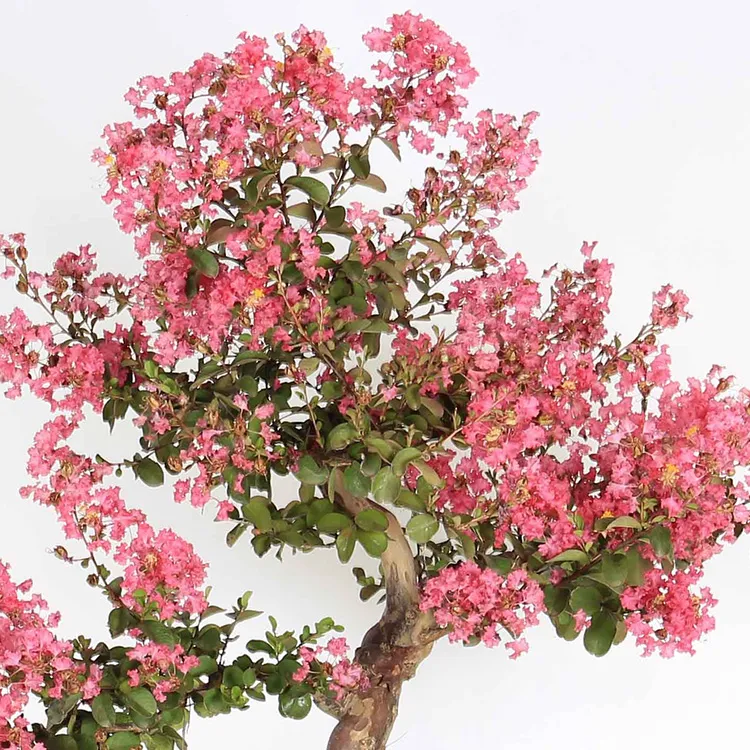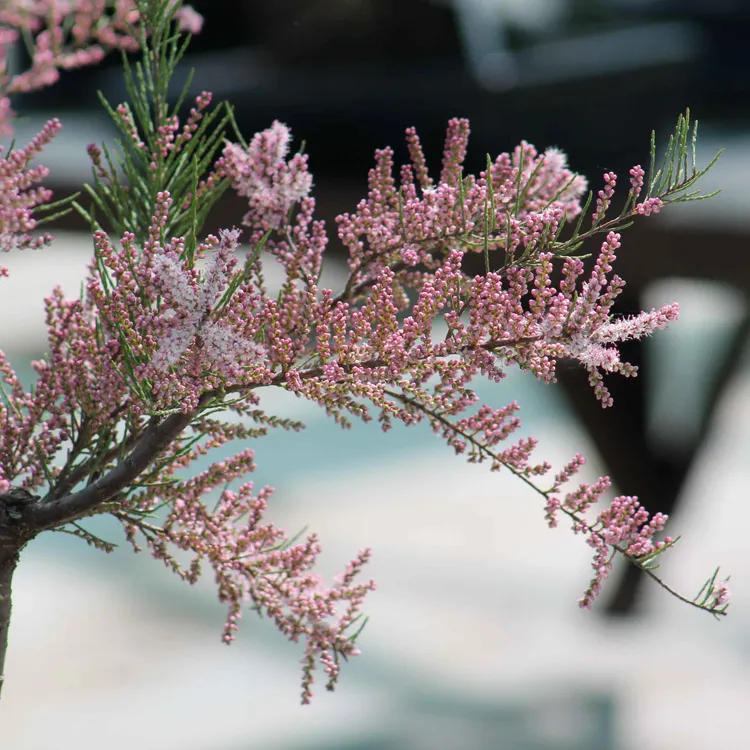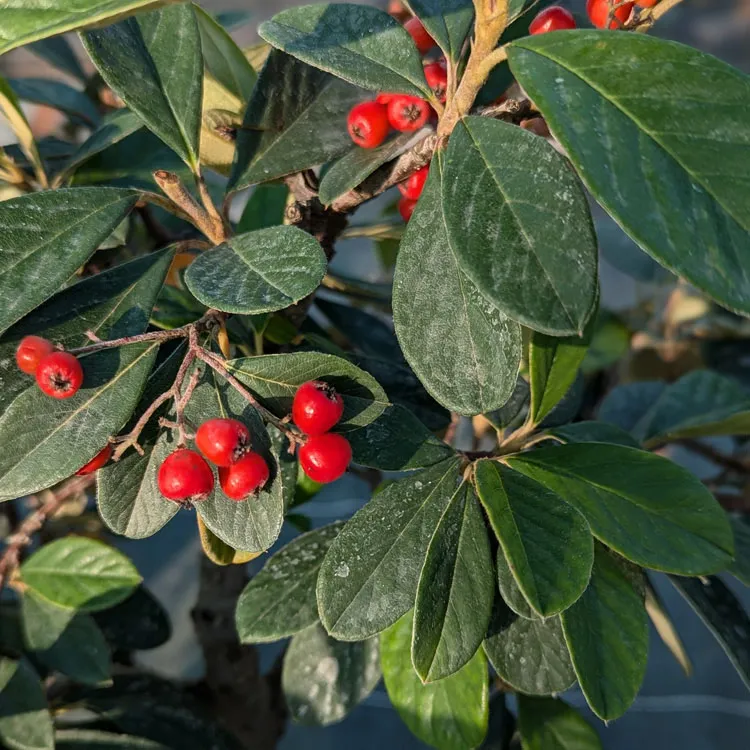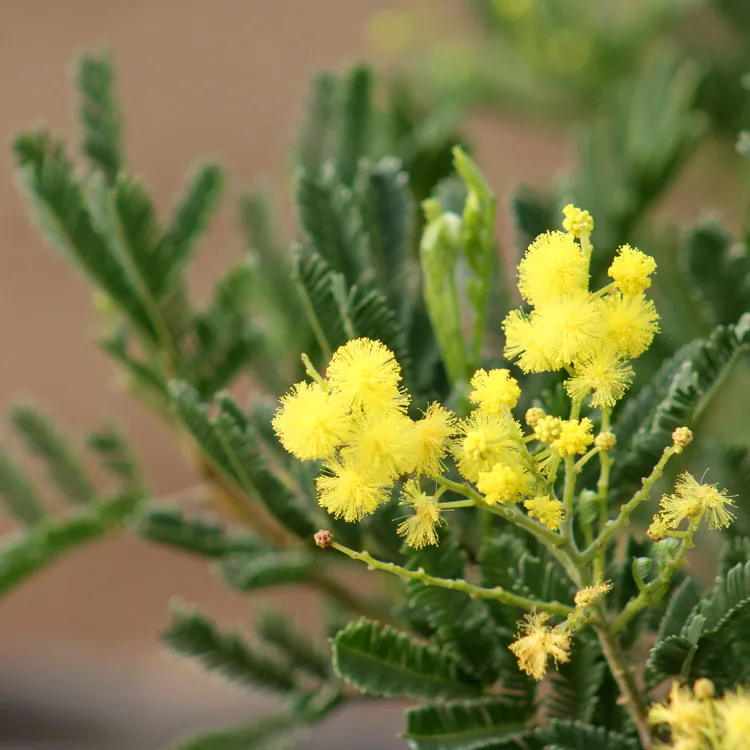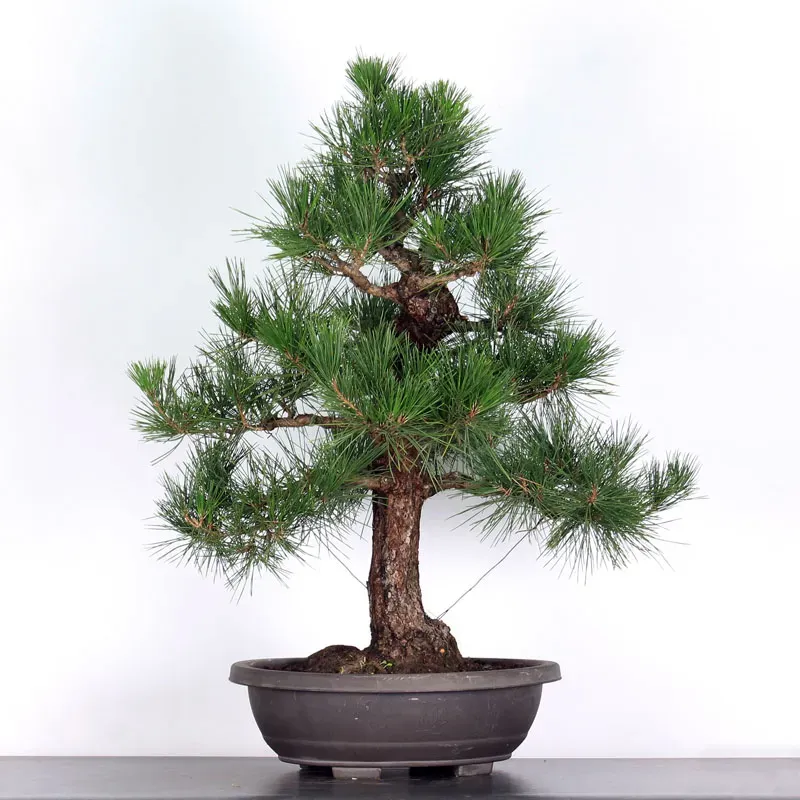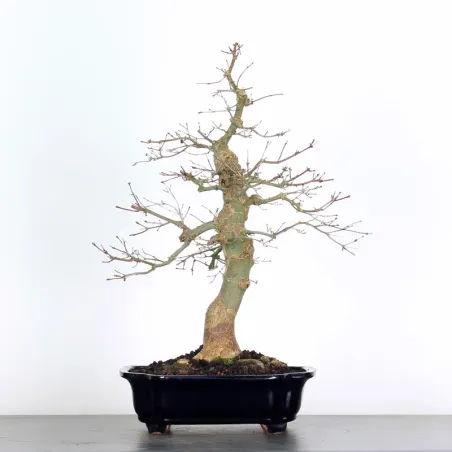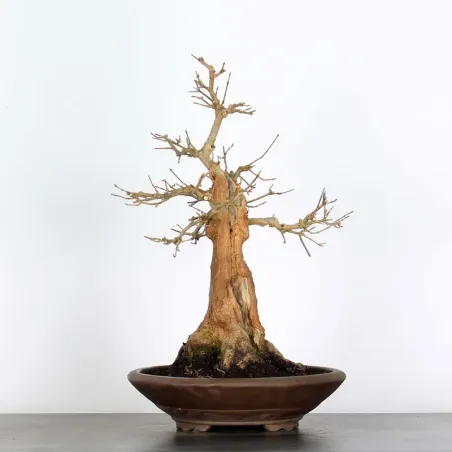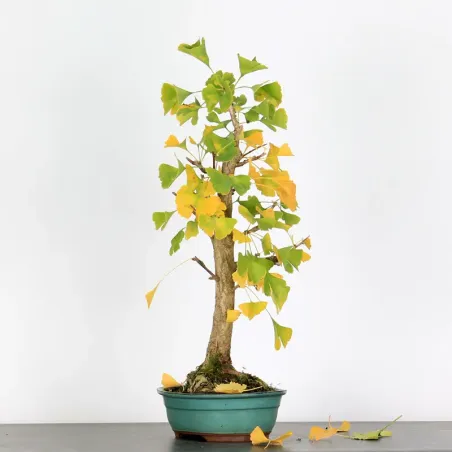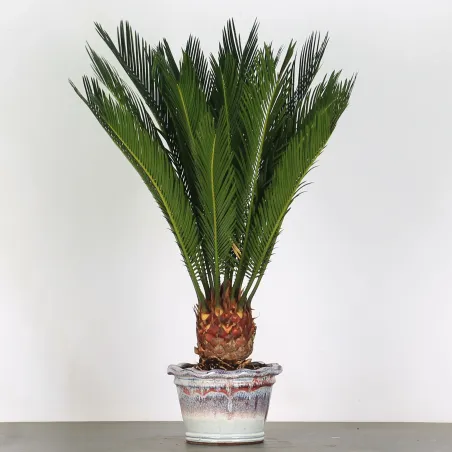 English
en
English
en
Bonsai
Bonsai pinus thunbergii 1-6
The Thunbergii Pine is an essence of virility par excellence: upright, magnificent, powerful, well "seated" in its pot, rises towards the sky. The dark trunk, with cracked bark, offers a striking contrast to the rather light green needles, full of freshness and health.
- Datasheet > Complete Guide Japanese Black Pine
Japanese black pine in bonsai
In Japan, this pine is considered masculine. In temples it is often presented at the entrance, as a sign of protection. Its vigour, the texture of its bark, the dark colour of its needles, and their rigidity, give it its masculine character.
+ Family: Pinaceae
+ Origin: Japan
+ Deep green needle grouped in pairs
+ Seedlings grown in the ground and then in pots
Growing Tips
The Japanese black pine is what is known as a two-shoot pine because it has such vigor that with proper pinching you can force new buds to appear during the summer.
Location : In its natural environment, it is a very vigorous seaside tree. It should be exposed to outdoor sunlight. It is one of the trees that requires the most sunlight.
Watering : it should be controlled and moderated. Let the root ball dry out a little between waterings to avoid excess moisture. The length of the needles will also depend on your ability to manage watering. Reducing them is a combination of several factors, including reducing watering when they develop. Also, protect Japanese black pine from rains during the candle development period.
Substrate and repotting : in the spring just after the buds start to grow. Choose a well-draining substrate that will avoid stagnant moisture at the roots. Repot every 3 years for black pines in formation, then space them out as they mature and become denser.
Pruning : Always leave needles and buds on a branch you cut back, otherwise it will dry out. Pinching the buds in the spring to balance the forces and reduce the size of the needles.
Fertilization : On a mature bonsai, fertilize only from summer onwards so that you don't have large needles. On a growing black pine that you want to grow or densify, start fertilizing in late spring.
Ligation : during the winter until the beginning of spring so as not to damage the buds and candles. Black pine has a fairly soft wood that is quite easy to tie and allows for fairly free shaping.

 Production of French Bonsai
Production of French Bonsai































